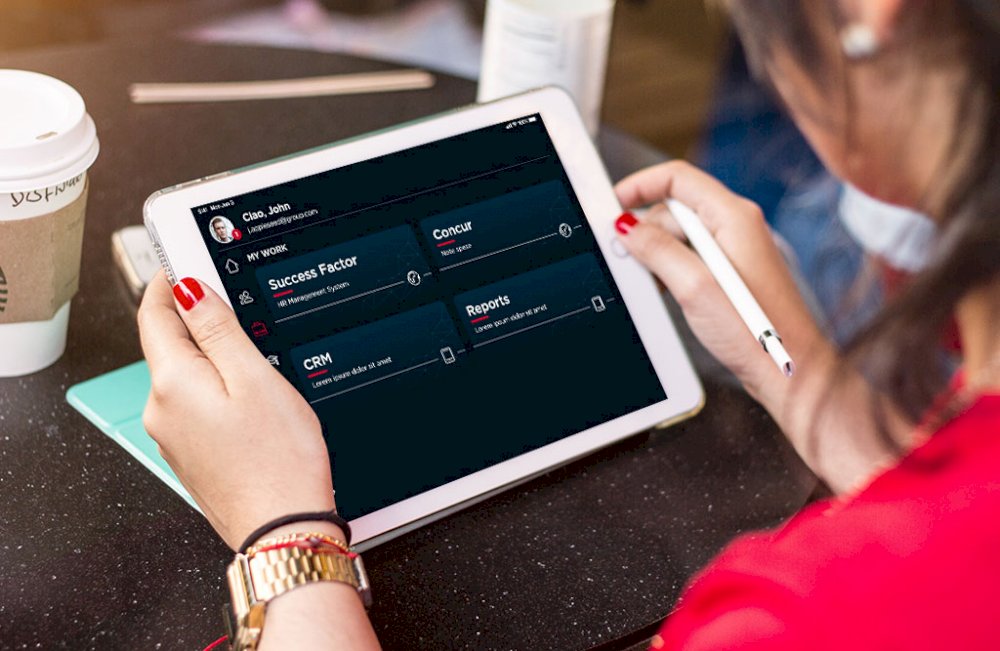Unique entry point app (or App Finder): business applications that improve efficiency and communication
Within a large company it is important to have an organised management of information and communication. It is also important to be able to easily find data that is often found in different files and links. This is why there is increasing interest in and demand for the development of professional apps that are able to aggregate everything (data, files, links, news and communications) on the same platform.
The advantages of using an app finder:Single point of access to business tools: easy access, also thanks to Single Sign-OnOptimisation of business processes with the associated increase in productivity, thanks to factors such as efficiency in processes and activities for better internal management;Moko develops app finders that allow employees to access all available company services, with different types of users: admins (access to all functionalities), users (selection of functionalities and management of customisable permission hierarchies) etc. The home page provides access to all links to company resources, managed by CMS. The latter is the tool chosen to control the contents agreed in the app, accessible via login with appropriate credentials.
It is also possible to insert news with management of priority, visibility and clusters of interest that will appear to users according to categorisation.
With the possibility of using them offline and facilitating access to resources, app finders can therefore be valuable allies for managing work in the company.

Within a large company it is important to have an organised management of information and communication. It is also important to be able to easily find data that is often found in different files and links. This is why there is increasing interest in and demand for the development of professional apps that are able to aggregate everything (data, files, links, news and communications) on the same platform.
The advantages of using an app finder:
- Single point of access to business tools: easy access, also thanks to Single Sign-On
- Optimisation of business processes with the associated increase in productivity, thanks to factors such as efficiency in processes and activities for better internal management;
Moko develops app finders that allow employees to access all available company services, with different types of users: admins (access to all functionalities), users (selection of functionalities and management of customisable permission hierarchies) etc. The home page provides access to all links to company resources, managed by CMS. The latter is the tool chosen to control the contents agreed in the app, accessible via login with appropriate credentials.
It is also possible to insert news with management of priority, visibility and clusters of interest that will appear to users according to categorisation.
With the possibility of using them offline and facilitating access to resources, app finders can therefore be valuable allies for managing work in the company.